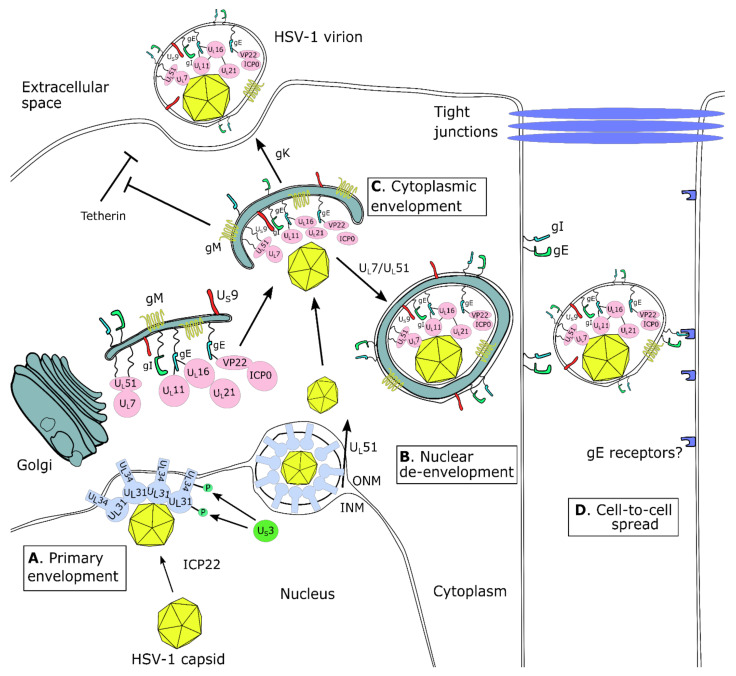Figure 3.
HSV-1 egress and relevant non-essential proteins. Essential proteins are not depicted. (A) UL31 and UL34 form the Nuclear Egress Complex (NEC), which drives the vesiculation of the inner nuclear membrane (INM) and primary envelopment of HSV-1 capsids. (B) Nuclear de-envelopment is mediated by UL51. Tegument and envelope proteins assemble in a complex network on membranes derived from the trans-Golgi network. (C) HSV-1 capsids undergo cytoplasmic envelopment in a process regulated by multiple non-essential proteins, which involves functional redundancy. After cytoplasmic envelopment, enveloped virions are sorted to the extracellular space, which requires gK. HSV-1 release from the cell membrane can be inhibited by tetherin, which is counteracted by gM. (D) Depending on cell type (e.g., polarized epithelial cells), enveloped virions can disseminate through cell-to-cell spread, in a process that requires UL7/UL51 for sorting of virions towards parts of the membrane that contain gE/gI. Virions may spread to adjacent cells by binding to gE/gI receptors in adjacent cells. However, such receptors are unknown.

